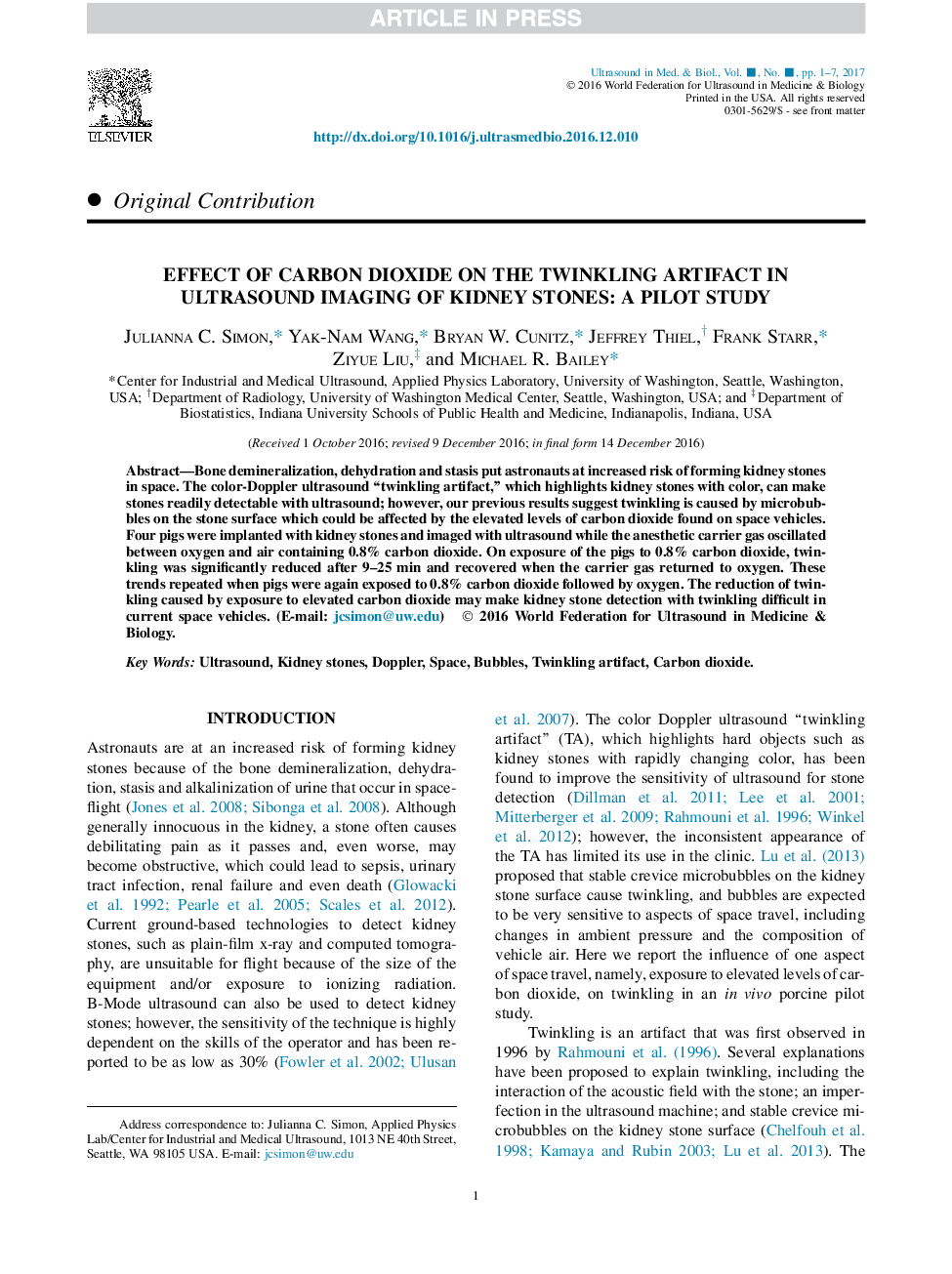| Article ID | Journal | Published Year | Pages | File Type |
|---|---|---|---|---|
| 5485942 | Ultrasound in Medicine & Biology | 2017 | 7 Pages |
Abstract
Bone demineralization, dehydration and stasis put astronauts at increased risk of forming kidney stones in space. The color-Doppler ultrasound “twinkling artifact,” which highlights kidney stones with color, can make stones readily detectable with ultrasound; however, our previous results suggest twinkling is caused by microbubbles on the stone surface which could be affected by the elevated levels of carbon dioxide found on space vehicles. Four pigs were implanted with kidney stones and imaged with ultrasound while the anesthetic carrier gas oscillated between oxygen and air containing 0.8% carbon dioxide. On exposure of the pigs to 0.8% carbon dioxide, twinkling was significantly reduced after 9-25Â min and recovered when the carrier gas returned to oxygen. These trends repeated when pigs were again exposed to 0.8% carbon dioxide followed by oxygen. The reduction of twinkling caused by exposure to elevated carbon dioxide may make kidney stone detection with twinkling difficult in current space vehicles.
Related Topics
Physical Sciences and Engineering
Physics and Astronomy
Acoustics and Ultrasonics
Authors
Julianna C. Simon, Yak-Nam Wang, Bryan W. Cunitz, Jeffrey Thiel, Frank Starr, Ziyue Liu, Michael R. Bailey,
